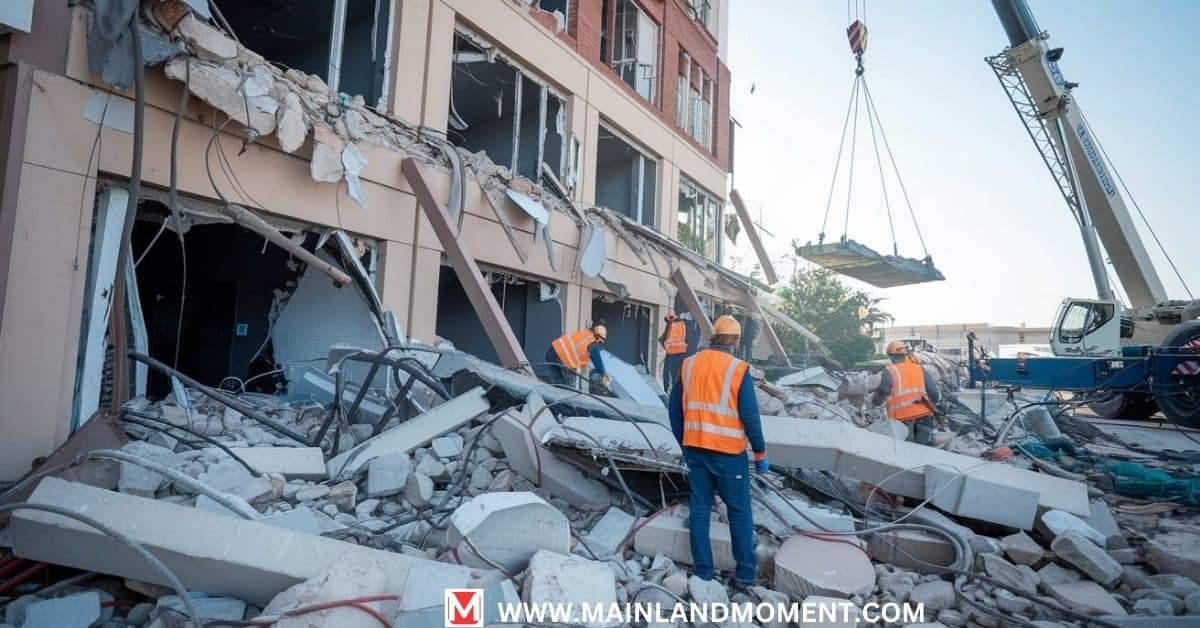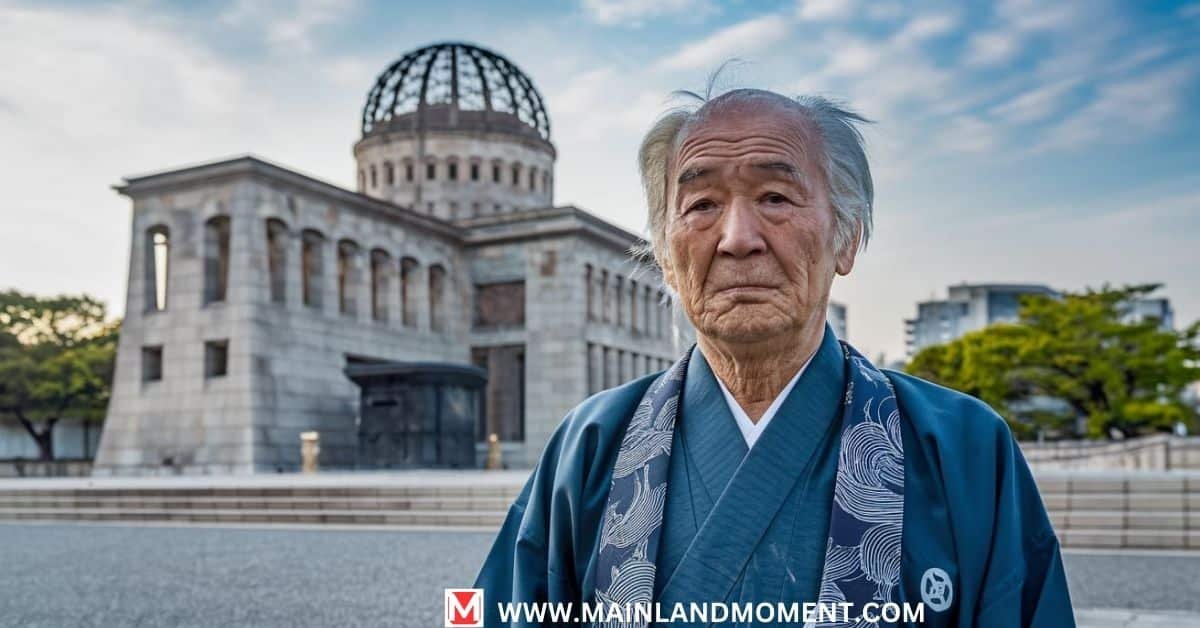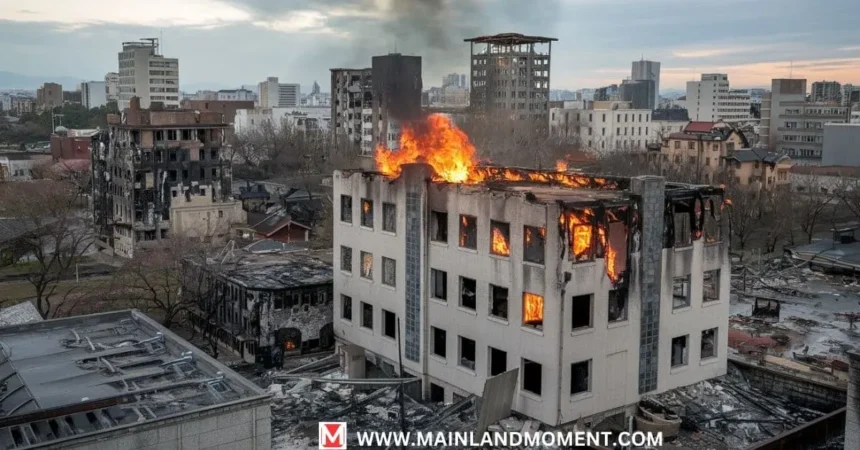How Hiroshima and Nagasaki Rebuilt After the Atomic Bombs with Resilience

In August of 1945, Hiroshima and Nagasaki were bombed in that fate. Two atomic bombs named “Little Boy” and “Fat Man” dropped by the U.S. were not only the means for ending World War II but also a means to ruin lives and cities and leave a scar Japan still feels today.
But here’s the incredible part: from that chaos, Hiroshima and Nagasaki clawed their way back. This isn’t just a history lesson, it’s a story of grit, survival, and a loud call for peace. Ready to see how they did it?
The Blast That Changed Everything: A Snapshot of August 1945
In Hiroshima, the bomb fell from an American B-29 bomber, and it was the first time a bomb of this kind had been dropped . Three days later, Nagasaki faces a plutonium nightmar, 20,000 tons of explosive force. Together, these Hiroshima and Nagasaki bombings killed over 214,000 people by December. Hiroshima lost 70% of its buildings; Nagasaki’s hilly terrain spared some, but 6.7 square kilometers still turned to ash.
The destruction was unreal. Ground temperatures soared to 4,000°C hot enough to melt steel. Radioactive “black rain” poured down, poisoning water and soil. Japan surrendered on August 15, but for these cities, surrender wasn’t the end. It was the starting line for a recovery nobody thought possible. How do you rebuild when everything’s gone?
Immediate Chaos: Why Help Couldn’t Come Fast Enough
After the nuclear bomb explosion, Hiroshima and Nagasaki weren’t just wrecked—they were helpless. In Hiroshima, 90% of doctors and nurses died or got hurt. Out of 45 hospitals, 42 became useless piles of rubble. Nagasaki’s medics faced 25,000 wounded with almost no tools. Supplies? Burned. Roads? Blocked.
The Red Cross has a chilling take: if a nuke hit today, no amount of global burn beds could save the victims. Back then, it was worse. Relief teams who rushed in after the atomic bombings often died from radiation exposure themselves. Survivors—called Hibakusha—faced a grim truth: no one could ease their pain. The humanitarian impact of nuclear weapons hit hard, leaving cities to fend for themselves.
First Steps Back: Clearing Rubble and Restoring Basics

But humans don’t give up easy. In Hiroshima, streetcars rattled back to life on August 9 just three days after the blast. Nagasaki’s trains followed soon after. Volunteers and atomic bomb survivors hauled debris by hand, dodging aftershocks and a typhoon that slammed Hiroshima in September ’45. Water took nine months to reach the outskirts every pipe a battle won.
Power flickered on slowly. By 1946, Hiroshima’s grid limped at 30% capacity, but it was something. Families cooked over open fires, bartered for food, and slept in shacks. These first steps weren’t pretty, but they proved one thing: even a nuclear attack couldn’t kill the will to start over.
Quick Facts: Early Recovery Milestones
- Hiroshima streetcars: Running August 9, 1945
- Nagasaki trains: Back online within weeks
- Water restoration: Full service by mid-1946
- Typhoon setback: 2,000 more deaths in Hiroshima, September 17, 1945
Rebuilding Lives: The Economic and Social Comeback
Fast forward to 1949 Japan passed two big laws. The Hiroshima Peace Memorial City Construction Law and Nagasaki International Cultural City Law pumped cash into recovery. Then the Korean War hit in 1950, and boom orders for steel and ships flooded in. Hiroshima’s factories roared back, hitting pre-war population levels (410,000) by 1958. Nagasaki pivoted to shipbuilding and tourism, shedding its military past.
Shantytowns faded as concrete buildings rose. Schools reopened by 1950, Hiroshima had 70% of its kids back in class. Families rebuilt not just homes but communities. The nuclear devastation left scars, but these cities turned rubble into a foundation. It wasn’t charity; it was sweat and strategy.
Economic Recovery Stats

Healing the Invisible Wounds: Radiation’s Lasting Echoes
The bombs didn’t stop hurting when the smoke cleared. Radiation exposure effects kicked in fast leukemia cases spiked within two years.Survivors started to suffer from long-term health impacts, such as thyroid, breast, and lung cancers, at least by the 1950s. Women who were pregnant either had miscarriages or gave birth to children who had intellectual disabilities. The atomic aftermath stretched across generations.
Yet Japan fought back. The Atomic Bomb Casualty Commission (ABCC), started in 1947, tracked radiation sickness and health trends. In 1957, the Victims Medical Care Law gave Hibakusha free treatment over 370,000 got certified by 2025. Here’s a surprise: studies later showed no major genetic mutations in survivors’ kids. Nature threw a curveball, but the nuclear weapons effects still linger.
“Each scar tells a story of survival, not just suffering.” —A Hiroshima doctor, 1960s
Voices of Survival: The Hibakusha’s Role in Recovery

Meet Koko Kondo. Eight months old, buried under rubble with her mom during the Hiroshima blast. She grew up to campaign against nukes. Then there’s Sadako Sasaki, folding 1,000 paper cranes before leukemia took her at 12. These Hibakusha stories aren’t just tearjerkers they’re the heartbeat of recovery.
Atomic bomb survivors didn’t sit quiet. They spoke at schools, built peace parks, and pushed Japan to reject nuclear weapons. Their firsthand accounts preserved at places like the Hiroshima Peace Memorial turned pain into purpose. By sharing their survivor testimonies, they made sure the world never forgets the nuclear war consequences.
Case Study: Sadako’s Legacy
- Who: Sadako Sasaki, Hiroshima survivor
- What: Folded 1,000 cranes hoping to heal
- Impact: Her story inspired the Children’s Peace Monument, unveiled 1958
- Today: Kids worldwide send cranes to Hiroshima
From Ruins to Renewal: Cities Reborn with Purpose
Walk Hiroshima today, and you’ll see the A-Bomb Dome a skeleton of survival next to the lush Peace Park. The Hiroshima Peace Memorial draws 1.5 million visitors yearly, teaching nuclear history. Nagasaki’s Nagasaki Atomic Bomb Museum pulls in 600,000, spotlighting its cultural rebirth. Both cities flipped the script: Hiroshima bets on peace, Nagasaki on heritage.
By 2025, Hiroshima’s GDP tops $80 billion, fueled by Mazda and tech. Nagasaki’s shipyards churn out $10 billion annually. Tourism thrives think peace pilgrims and history buffs. The blast impact left craters, but these cities filled them with meaning. They’re not just back they’re better.
Hiroshima vs. Nagasaki: Modern Vibes
- Hiroshima: Peace hub, industrial giant
- Nagasaki: Cultural gem, shipping powerhouse
- Shared Goal: No more nukes, ever
Lessons for Today: What Hiroshima and Nagasaki Teach Us
Here’s the scary part: as of February 2025, Russia and the U.S. still hold over 12,000 nuclear warheads. One slip, and we’re back to 1945. The nuclear destruction of Hiroshima and Nagasaki screams a warning yet it also whispers hope. Recovery’s possible, but why risk it?
Setsuko Thurlow, a Hiroshima Hibakusha, nailed it in her 2017 Setsuko Thurlow speech for the Nobel Peace Prize with ICAN: “Let’s ensure their deaths weren’t in vain.” The Treaty on the Prohibition of Nuclear Weapons, adopted that year, reflects her fight. Over 80% of Hibakusha back it, per a 2018 Kyodo News poll. The humanitarian impact of nuclear weapons isn’t history it’s a choice we face now.
So, what’s the takeaway? These cities rose from ground zero not by luck but by will. You’ve seen their comeback now picture a world that never needs one. That’s the real lesson.
5 Ways Hiroshima and Nagasaki Inspire Us
- Resilience rocks: They rebuilt with next to nothing.
- Peace pays off: Turning scars into symbols worked.
- Voices matter: Hibakusha flipped trauma into action.
- Health heals: Tackling radiation poisoning took guts.
- Future first: Saying no to nukes protects us all.
Wrapping It Up
Surviving the bombings of Hiroshima and Nagasaki did not mean just surviving. From streetcars creaking back to life to the Nagasaki Atomic Bomb Museum, preserving truth, every step shouted defiance. The Hibakusha stories, the long-term impact, the sheer will to rebuild it’s all proof humans can rise from anything.
But here’s the kicker: we don’t have to. The nuclear fallout still haunts, with cancers popping up 80 years later. So, next time someone mentions the dangers of an arms race, remind them of Koko or Sadako or Setsuko as well. They are survivors and hence our wake-up call. Do you wish to discover more?Check out the Hiroshima Peace Memorial online or the Nagasaki Atomic Bomb Museum archives. Their story’s not over it’s yours to carry.






